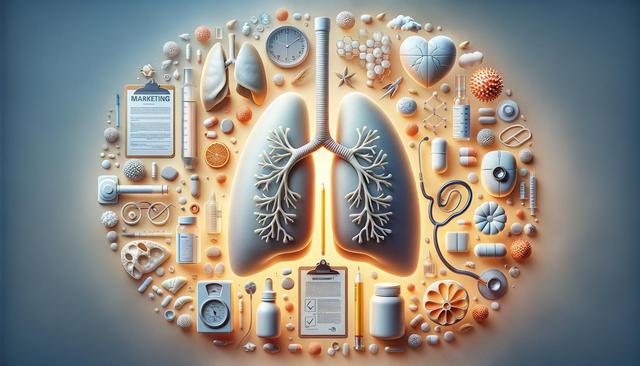Effective Strategies to Manage and Improve COPD
Chronic Obstructive Pulmonary Disease (COPD) can be challenging, but with the right approach, its symptoms can be managed for a better quality of life.

Understanding COPD and Its Impact
Chronic Obstructive Pulmonary Disease, or COPD, is a progressive respiratory condition that makes breathing increasingly difficult over time. It commonly includes chronic bronchitis and emphysema, which damage the lungs and restrict airflow. COPD is primarily caused by long-term exposure to harmful particles or gases, most often from smoking, though occupational exposures and genetic factors can also play a role. Recognizing the early signs—such as persistent cough, shortness of breath, and frequent respiratory infections—is crucial for timely management.
The disease not only affects the lungs but can also impact heart function and overall stamina. Without proper management, COPD can lead to significant physical limitations and a reduced ability to perform daily tasks. However, understanding how COPD progresses and affects the body helps in developing a structured care plan that targets both immediate symptoms and long-term health goals.
Medical Treatment and Monitoring
Managing COPD effectively often starts with the right medical treatment. Healthcare providers typically recommend a combination of medications and regular monitoring to slow the disease’s progression and control symptoms. Common treatments include:
- Bronchodilators to relax airway muscles and improve airflow
- Inhaled corticosteroids to reduce inflammation
- Combination inhalers for enhanced relief
- Oxygen therapy in advanced cases to maintain adequate oxygen levels
Regular check-ups are essential for adjusting treatment plans based on the patient’s evolving condition. Pulmonary function tests, oxygen saturation monitoring, and imaging tests help track disease progression. It’s also important for patients to communicate openly with their healthcare providers about changes in symptoms or medication side effects.
Vaccinations, such as flu and pneumococcal vaccines, are recommended to prevent respiratory infections that can worsen COPD. Early intervention during flare-ups or exacerbations can also prevent hospitalizations and further lung damage.
Lifestyle Adjustments for Better Living
Beyond medical treatment, lifestyle changes play a vital role in managing COPD. Small, consistent adjustments can make daily life more comfortable and reduce the frequency of exacerbations. Key lifestyle strategies include:
- Quitting smoking entirely to prevent further lung damage
- Maintaining a healthy, balanced diet to support immune function
- Staying physically active with guided exercise plans or pulmonary rehabilitation
- Creating a clean living environment that minimizes exposure to dust, smoke, and allergens
Developing a daily routine that includes rest periods and structured activities helps conserve energy and prevent fatigue. Stress management techniques such as mindfulness, breathing exercises, and counseling can also improve emotional well-being, which is often affected by chronic illnesses.
Importance of Pulmonary Rehabilitation
Pulmonary rehabilitation is a structured program that combines education, exercise training, nutrition advice, and psychological support for individuals with chronic lung conditions. These programs are often tailored to the individual’s severity of COPD and overall health status. Pulmonary rehab can significantly enhance physical capabilities, reduce symptoms, and improve overall quality of life.
Some of the benefits of participating in pulmonary rehabilitation include:
- Improved lung function and exercise tolerance
- Reduced breathlessness during daily activities
- Lower incidence of hospital admissions
- Enhanced emotional health and confidence in managing the condition
Patients are guided by a multidisciplinary team, often including respiratory therapists, dietitians, and psychologists, to address all aspects of living with COPD. Continued participation or follow-ups after completing a rehab program can help maintain the benefits and provide ongoing support.
Building a Long-Term Management Plan
Managing COPD is a lifelong commitment, and having a comprehensive plan can make a significant difference. A long-term approach involves regular monitoring, lifestyle maintenance, and a strong support system. Patients should work closely with their healthcare providers to establish a personal action plan, which includes:
- Recognizing early signs of worsening symptoms
- Knowing when and how to use rescue medications
- Scheduling routine follow-up appointments
- Adopting strategies to avoid triggers and infections
Family members and caregivers also play an important role in supporting individuals with COPD. Education and open communication can empower everyone involved to respond effectively during exacerbations and help make informed decisions. Joining support groups or online communities can offer additional encouragement and shared experiences.
Technology can also assist in managing COPD through mobile apps that track symptoms, medication schedules, and oxygen levels. These tools can improve adherence to treatment plans and provide useful data for healthcare providers during consultations.
Conclusion: Empowering Better COPD Management
Living with COPD requires a proactive and informed approach. By combining medical treatments, lifestyle changes, and ongoing support, individuals can manage their symptoms more effectively and maintain a higher quality of life. Staying engaged in one’s care, participating in pulmonary rehabilitation, and building a sustainable management plan are all essential steps. Though COPD is a chronic condition, many people find that with the right strategies, they can continue to lead active and fulfilling lives.